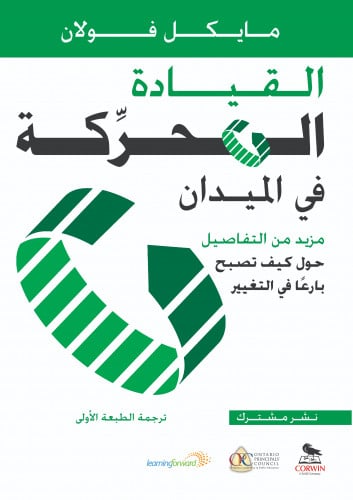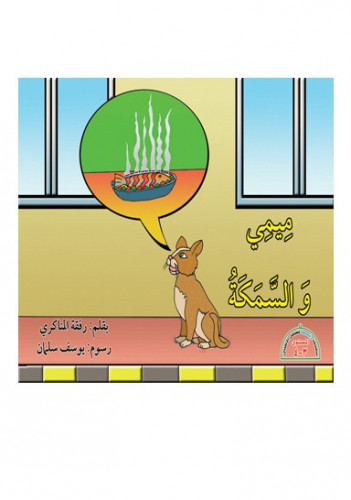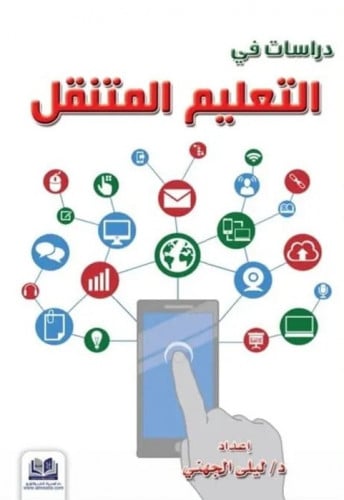AVAILABLE IN ARABIC
About This Book
Dealing with student misbehavior and encouraging student motivation are two of the most important concerns for new teachers. Classroom Management for Middle and High School Teachers, Ninth Edition, provides new and experienced teachers with the skills, approaches, and strategies necessary to establish effective management systems in the secondary-school classroom.
Based on 30 years of research and experience in more than 500 classrooms, the newest edition of this best-selling text presents step-by-step guidelines for planning, implementing, and developing classroom management tasks to build a classroom environment that focuses on and encourages learning. Students can apply what they learn as they review and complete the examples, checklists, case study vignettes, and group activities presented in each chapter.
Topics : Student behavior,Classroom Management
Table Of Content
Chapter 1: Organizing Your Classroom and Materials
Five Keys to Good Room Arrangement
Suggestions for Arranging Your Classroom
Bulletin Boards and Walls
Floor Space
Storage Space and Supplies
If You Have to "Float"
Further Reading
Suggested Activities
Checklist 1: Room Preparation
Chapter 2: Choosing Rules and Procedures
Why Rules and Procedures Are Needed
Definitions
Identifying School Rules and Procedures
Planning Your Classroom Rules
Student Participation in Rule Setting
Consequences for Rule Violations
Planning Classroom Procedures
General Procedures
Beginning-of-Period Procedures
Use of Materials and Equipment
Endin.c1 the Period
Procedures during Seatwork and Teacher-Led Instruction
Student Attention during Presentations
Student Participation
Procedures for Seatwork
Procedures for Student Group Work
Use of Materials and Supplies
Assignment of Students to Groups
Student Goals and Participation
Cooperative Learning
Miscellaneous Procedures
Signals
Public Address (PA) Announcements and Other Interruptions
Special Equipment and Materials
Fire and Disaster Drills
Split Lunch Period
Further Reading
Suggested Activities
Case Study 2.1: Rules and Procedures in an Eighth-Grade Class
Case Study 2.2: Procedures for Small-Group Work/Laboratory Activities
Checklist 2: Rules and Procedures
Chapter 3: Managing Student Work
Your Grading System and Record Keeping
Feedback and Monitoring Procedures
Monitoring Student Work in Progress
Long-Range Monitoring
Communicating Assignments and Work Requirements
Instructions for Assignments
Standards for Form, Neatness, and Due Dates
Procedures for Absent Students
Further Reading
Suggested Activities
Case Stud173.1: An Accountability System in an English Class
Case Study 3.2: Managing Student Work in a Math Class
Case Study 3.3: Managing Long-Term Assignments
Case Study 3.4: Poor Work and Study Habits in Mathematics
Checklist 3: Procedures for Managing Student Work
Chapter 4: Getting Off to a Good Start
Perspectives on the Beginning of the Year
Teacher Authority
Planning for a Good Beginning
Procedures for Obtaining Books and Checking Them Out to Students
Required Paperwork
Class Rosters
Seating Assignments
First-Week Bell Schedule
Tardiness during the First Days of Classes
Administrative Tasks
Rules
Course Requirements
A Beginning-of-Class Routine
Alternative Activities
Activities on the First Day of Classes
Before Class Begins
Administrative Tasks
Introductions
Discussion of Class Rules
Presentation of Course Requirements
An Initial Content Activity
Ending the Period
The Second Day of Classes
The Second Day
Further Reading
Suggested Activities
Case Study 4.1: Beginning the Year in a First-Year Algebra Class Using Cooperative Learning Groups
Case Study 4.2: Beginning the Year in a High School Biology Class
Case Study 4.3: Conduct Problem in a History class
Checklist 4: Preparation for the Beginning of School
Chapter 5: Plan g and Conducting instruction
Planning Classroom Activities
Types of Activities
Organizing Activities
Kounin's Concepts for Managing Group Instruction
Preventing Misbehavior
Managing Movement
Maintaining Group Focus
Transition Management
Instructional Management
Planning
Presenting New Content Clearly
Checking for Understanding
Further Reading
Suggested Activities
Case Study 5.1: Over and Over
Case Study 5.2: Transition Problems
Case Study 5.3: Problems with Small-Group and Discussion Activities
Case Study 5.4: Kounin Concepts
Case Study 5.5: A Science Lesson
Checklist 5: Planning for Instruction
Chapter 6: Managing Cooperative Learning Groups
Research on Cooperative Learning
Strategies and Routines That Support Cooperative Learning
Room Arrangement
Talk and Movement Procedures
Group Attention Signals
Promoting Interdependence within the Group
Individual Accountability
Monitoring Student Work and Behavior
Interventions for Groups
Effective Group-Work Skills
Social Skills
Explaining Skills
Leadership Skills
Beginning the Use of Cooperative Learning Groups
Room Arrangement
Procedures and Routines
Forming Groups
Initial Group Tasks
Teaching Group Skills
Using Group and Individual Rewards
Further Reading
Suggested Activities
Checklist 6: Planning for Cooperative Group Instruction
Chapter 7: Maintaining Appropriate Student Behavior 131
Monitoring Student Behavior
Consistency
Prompt Management of Inappropriate Behavior
Four Simple Ways to Manage Inappropriate Behavior
Building a Positive Climate
Improving Class Climate through Incentives or Rewards
Grades and Other Symbols
Recognition
Activities as Rewards
Material Incentives
Caution in the Use of Rewards
Further Reading
Suggested Activities
Case Study 7.1: Examples of Incentives and Rewards
Awards and Other Recognition
Competitions
Encouraging Improvement
Extra-Credit Assignments
Special Activities and Privileges
Weekly Point System
Chapter 8: Communication Skills for Teaching
Constructive Assertiveness
Empathic Responding
Problem Solving
Talking with Parents
Further Reading
Suggested Activities
Assertiveness Assessment Scales
Case Study 3.1: Three Dialogues
Chapter 9: Managing Problem Behaviors
What Is Problem Behavior?
Nonproblem
Minor Problem 173
Major Problem, but Limited in Scope and Effects
Escalating or Spreading Problem
Goals for Managing Problem Behavior
Management Strategies
Minor Interventions
Moderate Interventions
More Extensive Interventions
Special Problems
Chronic Avoidance of Work
Fighting
Other Aggressive Behavior
Bullying
Disrespect, Defiance, or Hostility toward the Teacher
A Final Reminder: Think and Act Positively
Further Reading
Suggested Activities
Chapter 10: Managing Special Groups
Teaching Heterogeneous Classes
Assessing Entering Achievement
Modifying Whole-Group Instruction
Cooperative Work Groups
Small-Group Instruction
Mastery Learning
Teaching Remedial Classes
Learner Characteristics
Establishing Your Management System
Monitoring Behavior
Managing Student Work
Planning and Presenting Instruction
Students with Special Needs
Content Mastery Classroom (CMC)
Inclusion
Students with Emotional and/or Behavioral Problems
Students with Serious Social Deficits, Often Diagnosed with Autism Spectrum Disorder
Students with Attention Deficit Hyperactivity Disorder (ADHD)
Students Who Are Deaf or Hard-of-Hearing
Students Who Are Blind or Visually Impaired
Students Living in Extreme Poverty
Students with Limited English Proficiency
No Child Left Behind
Further Reading
Suggested Activities
Case Study 10.1: Using Small Groups in English
Case Study 10.2: An Inclusion Program in a Middle School
Problem Scenarios
Problem 10.1: Heterogeneous Classes
Problem 10.2: Teaching a Remedial Class
Problem 10.3: Student Behavior in a Remedial Class
Appendix: Answer Keys for Chapter Activities
References and Further Readings
Index
About the Authors
Carolyn M. Everton:

CAROLYN M. EVERTSON, PH.D., Professor of Education Emerita, Peabody College, Vanderbilt University and Director of COMP, is one of the world's leading experts on classroom management. She and her colleagues conducted the original studies on how teachers manage classrooms from the first day of school.
These and subsequent studies led to over 120 articles, chapters and books on classroom management and supporting students' social and academic learning, including two textbooks, Classroom Management for Elementary Teachers and Classroom Management for Middle and High School Teachers (both with Edmund Emmer) published in their 9th editions. Along with Carol S. Weinstein, she edited the Handbook of Classroom Management: Research, Practice and Contemporary Issues (2006) Lawrence Erlbaum Associates.
Dr. Evertson received her Ph.D. in Educational Psychology and baccalaureate degree in Elementary Education from the University of Texas, Austin. While at Peabody College, Vanderbilt, she directed several federally funded projects on classroom teaching and teacher education. Carolyn developed COMP: Creating Conditions for Learning, to assist teachers in effective classroom management and instruction. COMP is validated by the National Diffusion Network and is included in the Comprehensive School Reform Demonstration Models, administered by Northwest Regional Laboratory for the Department of Education.
Edmund T.Emmer:
-
ISBN: 978886086353--5
Author: Edmond T.Emmer, Carolyn M. Everton
Publisher: Educational Book House
Publish Year: 2010
Size: 17 × 24 سم
Pages number: 424













